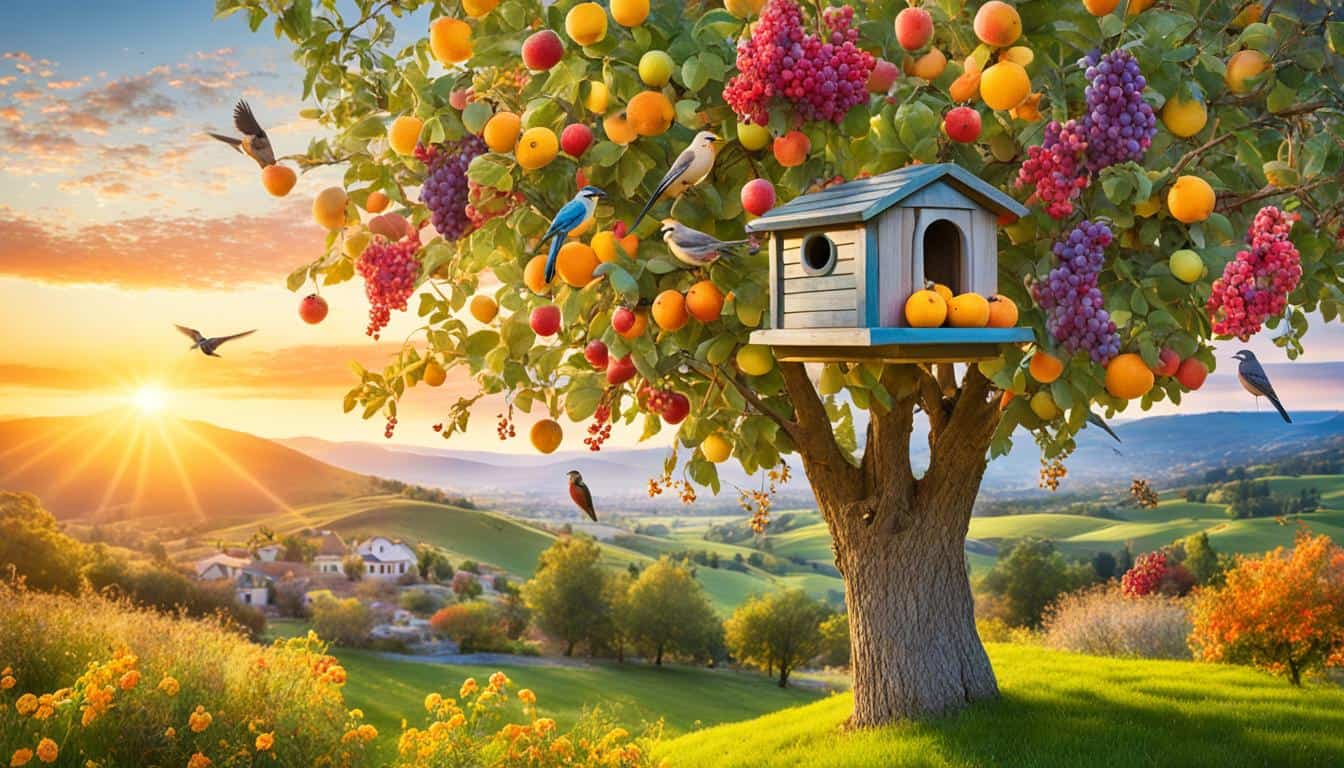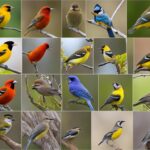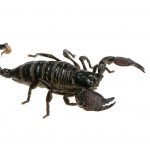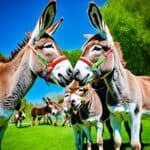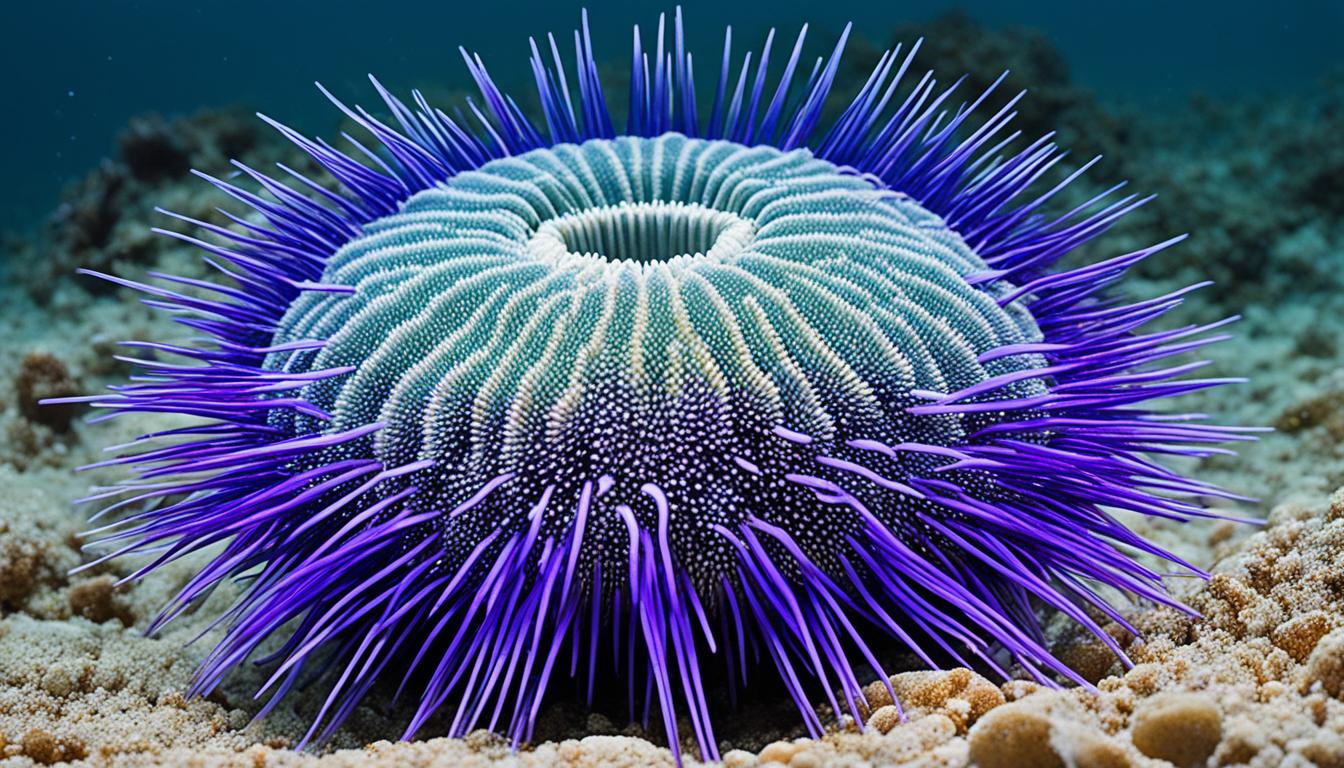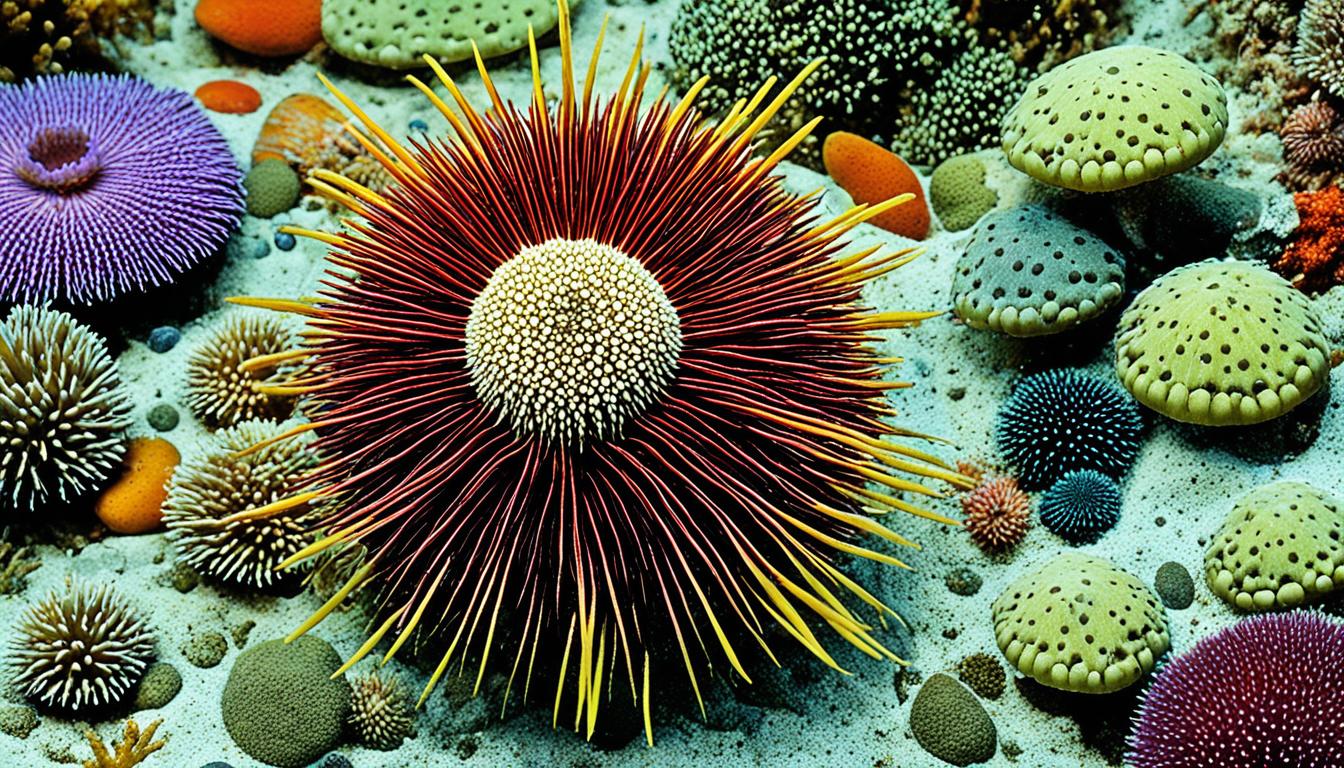Ever thought about making your farm a haven for native birds? It’s more than just putting up bird feeders. You need to ensure they have all they need: shelter, food, and water.
Creating a peaceful place full of native birds means giving them the right homes. This includes birdhouses placed in safe spots and the right plants for nesting. This is what being bird-friendly is all about.
Adding water features like bird baths helps a lot. They offer a place to drink and bathe, attracting not just birds but other wildlife. Different foods, from plants to bird feeders, will bring more birds to your farm.
Offering perches and nesting materials, like twigs and grass, is key. These small actions turn your farm into a comfy spot for birds. Follow these tips for a lively farm filled with beautiful bird songs.
Provide Natural Shelter for Birds
Make your farm a bird haven by enhancing natural shelters. This includes setting up birdhouses with different entry sizes. This attracts various birds like bluebirds and woodpeckers. Adding bird feeders and lush vegetation aids in their shelter and feeding, making your farm a bird-friendly area.
Planting thorny bushes and dense shrubs is also key for bird safety from predators. This method drawns in native birds effectively. Surrounding your area with perches and stakes supports birds’ resting needs and allows them to watch their territories.
Create a Water Source for Birds on Your Farm
Having a good water source is key for attracting native birds to your farm. Birds need water for both drinking and baths. So, it’s important to provide different options for them.
Bird Baths as a Simple Solution
Bird baths are an easy and popular way to give birds water. Place them in spots that are safe and easy to reach. Keep them clean and full of fresh water. This stops diseases and makes birds return often.
Incorporating Ponds and Water Features
For bigger farms, adding ponds and water features is a great idea. These not only attract more bird types but also help in bird conservation. They enrich the farm’s environment, supporting a wider wildlife range.
Birds love the sound of moving water, like from fountains. And besides giving birds water, it helps with pest control and the environment. These features can make your farm a welcoming place for many bird varieties.
Offer a Variety of Food Sources
Having many food sources makes your farm a great environment for birds. This is key in helping farm bird populations grow. To support different bird types, it’s essential to vary the food offered.
Planting Seed-Bearing Plants
Choose plants that make seeds, like sunflowers and black-eyed Susans, to draw birds. They provide food and make the area look nice. Shrubs and trees that grow berries add to the food supply all year, helping birds.
Installing Bird Feeders
Bird feeders are crucial for bird care on your farm. Fill them with seeds birds like, such as black oil sunflower and nyjer. Suet feeders in winter give birds energy for cold days. Using native plants also attracts insects, another food source for birds.
Utilize Bird-Friendly Farm Practices
Using bird-friendly techniques on your farm helps the local bird population. You should make areas where birds can live and keep the farm clean and safe.
Avoiding Chemical Pesticides and Fertilizers
It’s important not to use chemical pesticides and fertilizers on your farm. These can hurt the birds. Instead, create a place where insects can live. This will be like a buffet for your bird guests. Doing this not only helps the birds but also the whole environment.
Maintaining Clean and Safe Bird Habitats
Cleaning up is key for the birds’ health and safety. You should regularly clean bird feeders and where they drink. If you keep the farm tidy, you will also keep away pests. This will make the farm a great place for local birds to visit.
Provide Perches for Resting and Surveying
Perches are key for a bird-friendly farm. Birds use them for resting and watching over their area for dangers. To attract birds, make sure you offer different kinds of perches.
Twig perches are great for small birds. They let finches and similar birds rest. For bigger bird friends, use stronger branches or poles. Placing perches around your farm creates a nice spot for many bird types.
- Identify natural locations for perch placement.
- Install varying perch types to attract different bird species.
- Regularly check and maintain perches for durability and safety.
| Perch Type | Ideal Bird Species |
|---|---|
| Thin Twigs | Finches, Sparrows |
| Medium Branches | Robins, Bluebirds |
| Sturdy Poles | Hawks, Owls |
By adding perches, you improve your bird-friendly farm practices. This makes your farm a better home for birds. With these farm birdwatching tips, your farm will support many types of native birds. This adds to the variety and life of your farm.
Offer Nesting Materials for Birds
Offering nesting materials is key in creating bird-friendly areas on farms. When native birds see the right nesting resources, they’re more likely to stay. Farmers can help by making sure these materials are available, and by setting up places for birds to find and use them.
Supplying Twigs and Grasses
Give birds twigs, grass, and feathers for their nests. These materials help make strong nests safe from the weather. Birds will use these if they’re easy to see and pick up.
Creating Designated Areas for Nesting Materials
Having special spots for nesting materials makes things easier for birds. Hanging bags with twigs, grass, and feathers around the farm helps birds find them. Keep filling these bags up to support the birds and grow the bird community on the farm.
“Birds are indicators of the environment. If they are in trouble, we know we’ll soon be in trouble.” – Roger Tory Peterson
By following these steps, your farm can be more welcoming to native bird species.
How do you attract native birds to your farm?
To get native birds to visit your farm, make a welcoming place for them. Use practices that are good for birds. Give them plenty of food options, like plants with seeds and different bird seeds in feeders. This way, you help many bird types find what they like to eat.
It’s important to have water for the birds, too. Bird baths and little ponds work well if you clean them often. The sound of moving water is a big draw for birds, encouraging them to visit.
Make sure there are safe spots for them to build nests. Put up birdhouses in protected areas. These houses should be the right size for various birds. Also, planting thick bushes and thorns can make good hiding places, keeping birds away from predators.
Add materials like twigs and grass around for nest building. Designate areas for these items. This step helps birds feel at home and want to stay on your farm.
To keep your farm safe and clean for birds, avoid using harmful chemicals. This will keep their food, like insects, healthy and plentiful. Additionally, having perches for birds provides great views for them. It’s like a lookout spot for safety.
Here’s a summary of the key practices:
- Diverse food sources: Seed-bearing plants and bird feeders.
- Water sources: Bird baths and ponds with clean water.
- Shelters and nesting areas: Birdhouses and dense foliage.
- Nesting materials: Twigs, grasses, and other natural materials.
- Bird-friendly practices: Avoiding chemicals and maintaining cleanliness.
- Perches: Providing resting spots for birds around the farm.
Follow these steps to attract many native birds to your farm. It will make your farm lively with their presence.
Design Bird-Friendly Landscaping with Native Plants
Creating a bird-friendly area starts with smart landscaping. Use native plants to make a welcoming environment for birds. This ensures birds visit throughout the year. These practices make your farm a beautiful, biodiverse space.
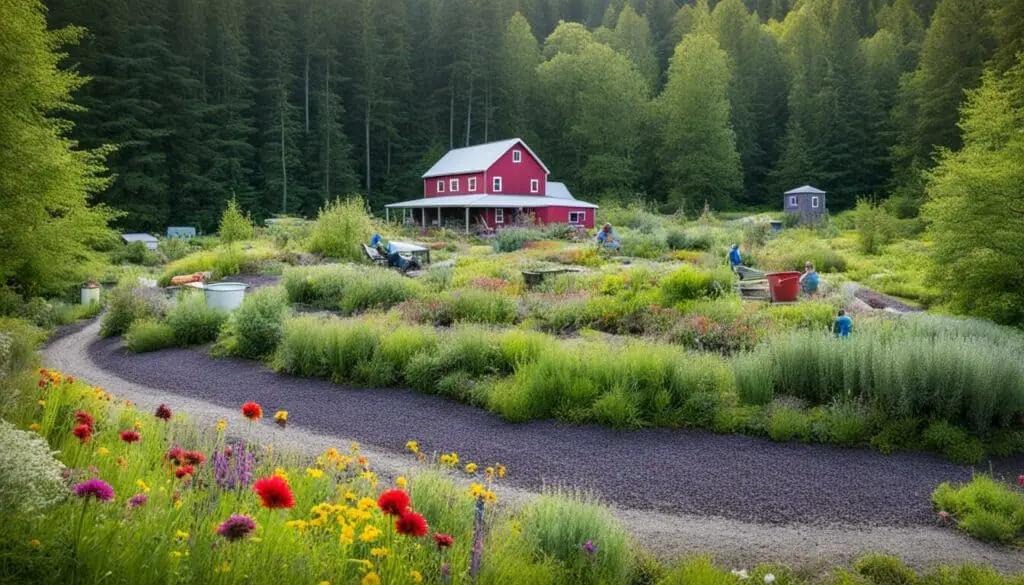
Choosing the Right Trees and Shrubs
It’s critical to pick the right trees and shrubs for your farm. Choose natives like oaks and maples for bird shelters and food. These plants attract a wide range of birds to watch on your farm.
Avoiding Invasive Plant Species
Keeping out invasive plants is crucial. They can hurt local plants and insects birds need to eat. By planting native species, seed-eaters and pollinators find food on your farm. This helps with birdwatching and supports your local wildlife’s habitat.
Include Plants that Support Pollinators
Starting to make your farm more ecologically resilient is easy. It begins with creating bird habitats on farm by adding plants that attract pollinators. This not only helps pollinators but also draws birds that eat them, all through native bird attraction methods.
It’s vital to pick a variety of plants carefully to aid this process. You should add flowers full of nectar, shrubs that bear fruit, and plants that make seeds. Here’s a list of great pollinator-friendly plants:
| Plant Type | Pollinators Attracted | Birds Benefited |
|---|---|---|
| Milkweed | Butterflies, Bees | Finches, Sparrows |
| Echinacea | Bees, Butterflies | Chickadees, Goldfinches |
| Goldenrod | Bees, Small Wasps | Warblers, Finches |
| Lavender | Bees, Butterflies | Hummingbirds, Wrens |
By planting these species, you’re doing more than helping pollinators. You’re also creating spaces for birds. This boosts biodiversity on your farm. These efforts work well with adding bird feeders for farm birds. They improve the birds’ diet and support sustainable farming.
“Introducing pollinator-friendly plants is a valuable strategy to attract both pollinators and the bird species that depend on them, fostering a vibrant ecosystem.”
The relationship between pollinators and birds is key. Planting for pollinators means more different birds will visit your farm. It’s important to choose and place these plants carefully across your farm to support these visitors.
Use Birdhouses and Nesting Boxes
Birdhouses and nesting boxes are key. They make farms more bird-friendly. By using them, you can attract native bird species to your farm.
Selecting Appropriate Birdhouse Designs
Choosing the right birdhouse design is important. Each bird species likes its own style. Make sure you pick the right size and shape. For example, bluebirds like small, round holes. But, woodpeckers need bigger spaces.
Proper Placement and Maintenance
Where you put birdhouses is crucial. Keep them safe from predators and bad weather. It’s also important to check and clean them often. This makes sure the birds keep coming back. It helps make the farm a happy place for our bird friends.
Implement Farm Bird Conservation Strategies
Creating a home for birds on your farm is key to their survival. You should work to make bird-friendly areas and provide food through bird feeders. This will help ensure various bird species thrive on your land.
Protecting Natural Habitats
Keeping natural areas safe is critical for bird life. These places provide birds with places to hide and find food. Adding bird-friendly spots on the farm, like brush piles, also helps.
Such efforts attract insects that birds eat. This can help the ecosystem and your farm work better together.
Promoting Biodiversity on Your Farm
Encouraging many plant and structure types is also important. This creates varied homes for different birds. Using feeders can also boost the food supply in tough times.
Different plants and trees mean more food and places to nest. This helps birds all year. With these steps, your farm can become a bird-friendly place, boosting its overall balance.
Understanding Native Bird Species and Their Needs
Knowing what native bird species need is key to bringing them to your farm. You need to understand what they eat, where they nest, and their favorite spots to live. With the right , you can make a great home for them. This makes birdwatching at your farm even more exciting.
It’s important to learn what food native birds like. Some such as seeds, while others like insects or berries. Knowing this lets you offer a mix of food. You can set out bird feeders and plant natural foods to attract different types of birds.
Places to nest are also critical for native birds. Many need special types of homes, like certain materials or locations. If you provide suitable nesting spots and natural materials, birds are more likely to stay on your farm. This is good for bird conservation, creating a place where they feel safe and at home.
Figuring out which environments native birds prefer is vital too. Some like lots of trees, while others like big open spaces or water. By creating a farm that matches these needs, you can attract a variety of birds. This helps support their presence on your farm in the long term.
Here is a quick look at what native bird species need and do:
| Aspect | Details |
|---|---|
| Dietary Requirements | Seeds, insects, berries |
| Nesting Habits | Nesting boxes, natural materials like twigs and grasses |
| Preferred Environments | Dense foliage, open fields, water sources |
Understanding native bird species and their needs helps you make your farm a great place for them. This way, you can work on farm bird conservation and enjoy the company of these feathered friends.
Engage in Farm Birdwatching Tips and Practices
Birdwatching on your farm is both rewarding and a learning experience. It shows you what birds need for their home and if your farm is bird-friendly. Remember, you’ll need patience as birds take time to notice and trust what you offer.
To get more birds to visit, make your farm a nice place for them. Set up bird baths, perches, and hiding spots. Also, provide many food types. This will draw in birds and help protect local bird types.
Watching farm birds lets you enjoy and help them. Learn what types of birds like your farm and why. Then, adjust your farm to suit them even better. This makes a great place for birds and helps your farm and local wildlife thrive.
FAQ
How do you attract native birds to your farm?
To bring native birds to your farm, give them suitable homes like birdhouses and nesting boxes. Use lots of plants for them to hide and find food in. Plant seeds that birds like and keep your feeders full. Make sure their water is clean. Also, don’t use bad chemicals on your farm.
What are the best practices for creating bird habitats on a farm?
Create spots on your farm where birds can find shelter and food. Use plants that protect and feed them. Put up bird homes in safe places. Add water and food options to attract a variety of birds.
How can I provide water for birds on my farm?
For birds’ drink, you can set up simple bird baths. Make sure they stay clean. You can also add ponds or fountains. This attracts more bird types and makes your farm more diverse.
What food sources should I offer to attract birds to my farm?
For bird food, plant things like sunflowers. Fill your feeders with different seeds. Use suet in winter to give birds energy. This mix attracts a wide selection of birds to your farm.
What are bird-friendly farm practices I should follow?
To be bird-friendly, avoid using harmful chemicals on your farm. Keep bird areas clean and safe. Let natural bugs be, this helps feed the birds. Clean their food and water spots often to avoid sickness.
Why are perches important for birds on a farm?
Birds need perches to rest and see around them. Place various perches around. This will draw different birds and let them act naturally.
How can I provide nesting materials for birds?
Help birds nest by leaving out twigs, grass, and feathers. You can also put these materials in bags for them. This makes your farm a welcoming spot for bird families.
What should I consider when designing bird-friendly landscaping with native plants?
Pick plants that birds like and that help them survive, such as holly. Avoid plants that hurt the local environment. Help keep the bug population up for the birds.
How do pollinator-friendly plants benefit birds on a farm?
Plants that attract insects help feed the birds. They also help bees and other pollinators, which are good for the farm environment. This keeps your farm healthy and varied.
What are the best practices for using birdhouses and nesting boxes?
Choose the right bird homes for the birds you want. Place them somewhere safe, away from dangers. Keep them clean and in good shape to welcome the birds.
How can I implement effective farm bird conservation strategies?
To protect birds on your farm, keep their habitats natural. Encourage a rich mix of bird homes all year round. This includes leaving some areas messy, which helps birds find food and shelter.
Why is it important to understand the needs of native bird species?
Knowing what native birds need helps you make a place they will love to live. You can provide food, homes, and a safe environment. This draws them in and helps them stay.
What are some tips for birdwatching on a farm?
Patience and watching closely are key to birdwatching on your farm. Make sure they have what they need to live well. This tells you if your farm is a good place for birds.

